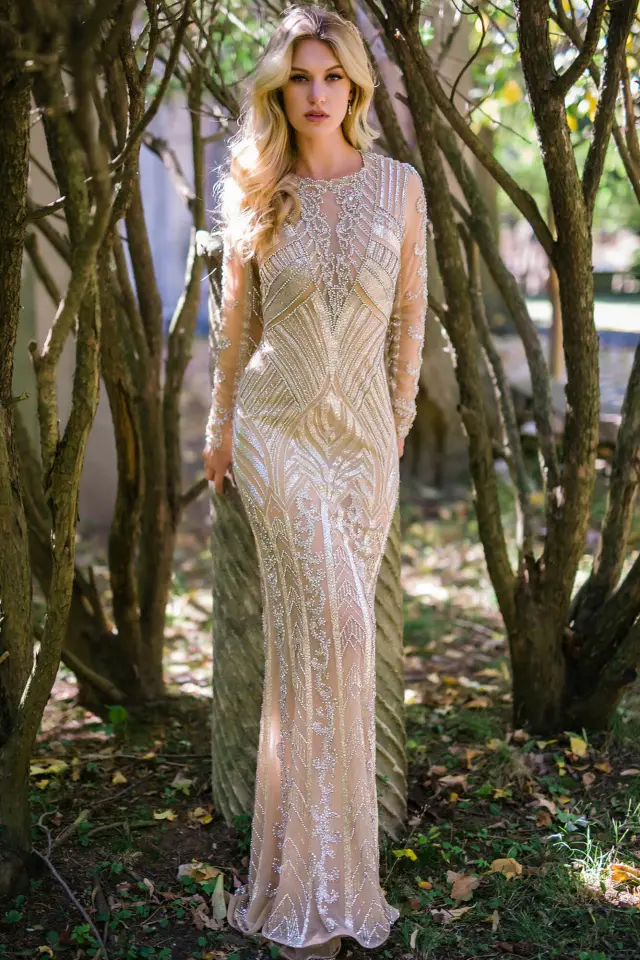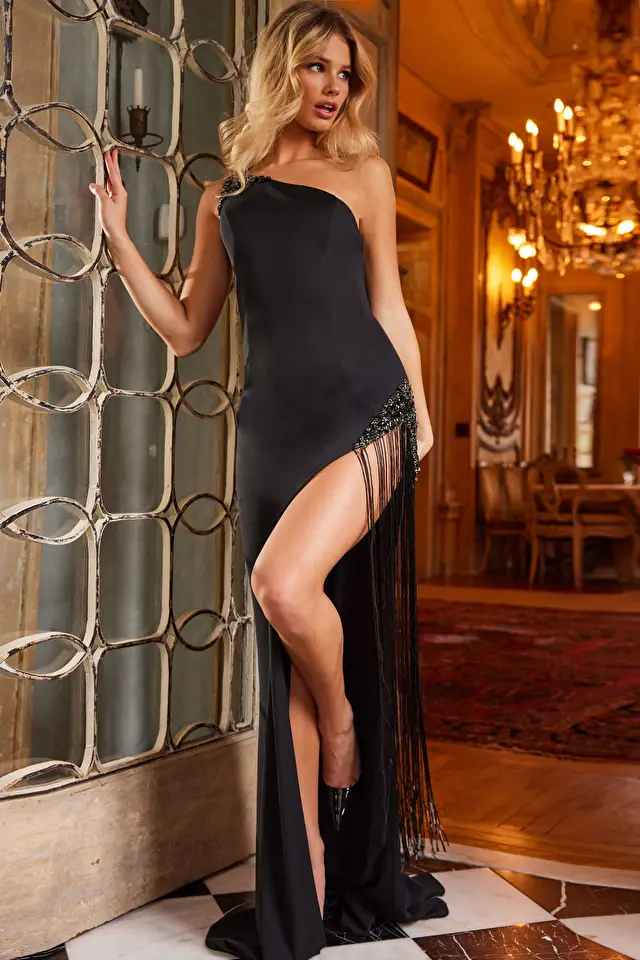The Ultimate Guide to Black Tie Dresses for Women

Black tie dresses are an essential part of a woman’s wardrobe, as they are designed to convey a sense of glamour and sophistication that sets them apart from other types of formal dresses.
The significance of black tie dresses is their ability to make women feel confident, beautiful, and elegant. They are typically made from high-quality fabrics such as silk, satin, or chiffon and feature intricate details such as beading, lace, or embroidery.
Black tie dresses are also different from other types of formal dresses in their length, with most styles featuring a floor-length hemline that adds to their sense of grandeur.
Selecting the right black tie dress is essential for women attending black tie events, as it reflects their style and respect for the occasion and the host. Finding the perfect black tie dress can be a challenging but rewarding experience with so many different styles, colors, and fabrics.

The black-tie dress code and its variations:
The black-tie dress code is a formal dress code typically required for events such as weddings, galas, and other formal occasions. For women, it typically means wearing a full-length evening gown or a formal cocktail dress. Men must wear a tuxedo with a black bow tie and black dress shoes.
There are variations of the black tie dress code, such as black tie optional, which means guests are allowed to wear a dark suit instead of a tuxedo, but a formal dress is still required for women. Another variation is black tie creative, which will enable guests to be more creative while adhering to the formal dress code.
Traditional elements of a black tie outfit for women:
Traditionally, a black tie outfit for women consists of a floor-length evening gown made of luxurious fabrics such as silk, satin, or chiffon. The dress should be elegant and understated, with minimal embellishments and clean lines. It is also common to wear simple, classic jewelry such as diamond or pearl earrings, a bracelet, or a necklace.

How to interpret and adhere to specific dress code requirements for different events:
Different events may have specific dress code requirements beyond the traditional black tie dress code. Researching and understanding the dress code expectations for each event is essential, and following them accordingly is vital. For example, a black-tie charity ball may require a more conservative dress than a black-tie wedding.
If in doubt, it is always best to err on the side of caution and choose a more conservative dress that adheres to the dress code. It is also essential to consider the venue and the time of the event, as a dress appropriate for an outdoor summer wedding may not be suitable for an indoor winter gala. Overall, it is essential to remember that dressing appropriately for a black-tie event shows respect for the occasion and the host.
Different types of black tie dresses available:
a) Ball Gowns: Ball gowns are typically full-length dresses with a fitted bodice and a voluminous skirt. They are usually made of luxurious fabrics and are suitable for formal events.
b) Cocktail Dresses: Cocktail dresses are shorter than ball gowns, usually knee-length or just above the knee. They are still formal but less grand than ball gowns and are suitable for cocktail parties or weddings.
c) A-Line Dresses: A-line dresses are fitted at the top and flare out towards the hemline, creating an “A” shape. They are a classic choice for black tie events, and their versatility makes them suitable for various occasions.
d) Sheath Dresses: Sheath dresses are fitted throughout the body and typically fall just above the knee. They are a modern take on the traditional black tie dress and are an excellent option for events with a contemporary feel.
Key features of each type of dress and the occasions they are most suited for:
Ball gowns are typically reserved for formal events such as galas, charity balls, and black-tie weddings. They are grand, elegant, and usually made of luxurious fabrics such as silk, taffeta, or velvet.
Cocktail dresses are versatile and can be worn to various events such as cocktail parties, weddings, and formal dinners. They are shorter than ball gowns but still formal and elegant.
A-line dresses are a classic choice for black tie events and can be worn to various occasions such as weddings, galas, and formal dinners. They are fitted at the top and flare out towards the hemline, creating a flattering silhouette.
Sheath dresses are a more modern take on the traditional black tie dress and are suitable for events with a contemporary feel. They are fitted throughout the body and usually fall just above the knee.
Styles and trends in black tie dresses for women:
Off-the-shoulder dresses, high-low hemlines, and sequin embellishments are currently popular trends in black tie dresses for women. Off-the-shoulder dresses are elegant and add a touch of glamour to any outfit. High-low hemlines are a modern take on the traditional floor-length dress, and sequin embellishments add a touch of sparkle and glamour to any outfit.
How to choose a black tie dress that flatters your body type:
When selecting a black tie dress, it is crucial to consider your body type and choose a dress that flatters your figure. This can be achieved by selecting dresses that emphasize your best features and minimize areas you could be more confident about.
Most common body types and the dresses that suit them best:
a) Hourglass: If you have an hourglass figure, you have a well-defined waistline and proportionate curves. A fitted ball gown or A-line dress will emphasize your curves and create a balanced silhouette.
b) Pear: If you have a pear-shaped figure, your hips are wider than your shoulders. A ball gown or A-line dress with a fitted bodice and a full skirt will balance your proportions and draw attention to your upper body.
c) Apple: If you have an apple-shaped figure, you carry most of your weight around your midsection. A sheath dress with a defined waistline will flatter your figure and create a balanced silhouette.
d) Rectangle: If you have a rectangular figure, your shoulders, waist, and hips are similar in width. A ball gown or A-line dress with a fitted bodice and a full skirt will create the illusion of curves and add volume to your lower body.
Tips for accessorizing and styling a black tie dress to complement your body type:
a) If you have an hourglass figure, consider accessorizing with a belt or sash to emphasize your waistline.
b) If you have a pear-shaped figure, consider pairing your dress with statement earrings or a necklace to draw attention to your upper body.
c) If you have an apple-shaped figure, consider accessorizing it with a clutch or statement earrings to draw attention to your upper body.
d) If you have a rectangular figure, consider accessorizing it with a statement necklace or earrings to create the illusion of curves.
In conclusion, selecting the right black tie dress for women is crucial for any formal event. A black tie dress is not just a piece of clothing but a symbol of elegance and sophistication. To make the most of your black tie attire, it is vital to understand the dress code, select a dress that flatters your body type, and shop wisely for the dress that fits your budget, event type, and personal style.


